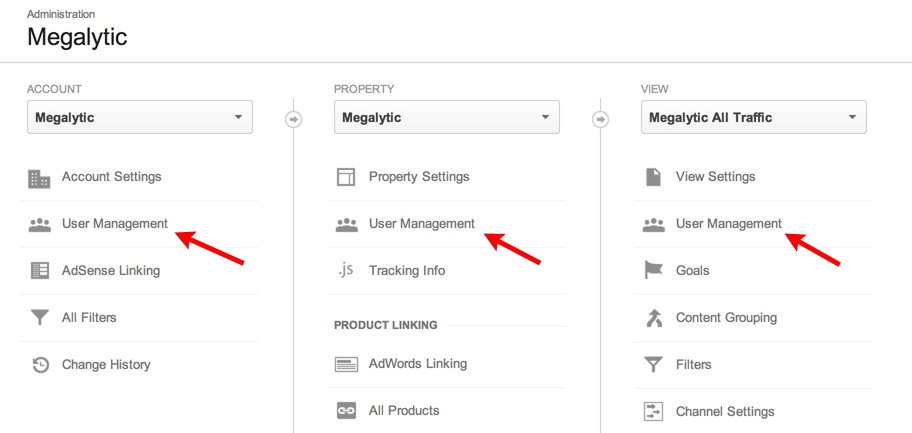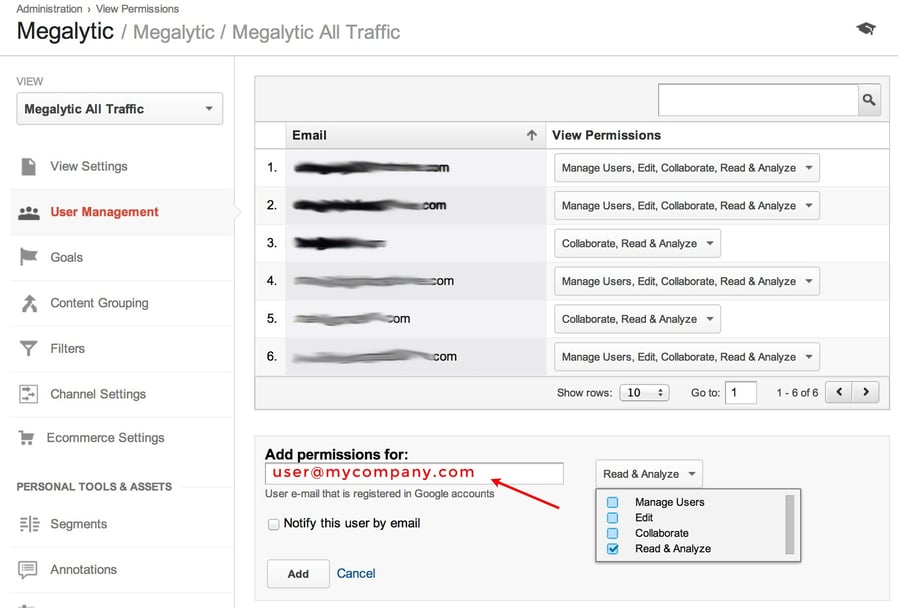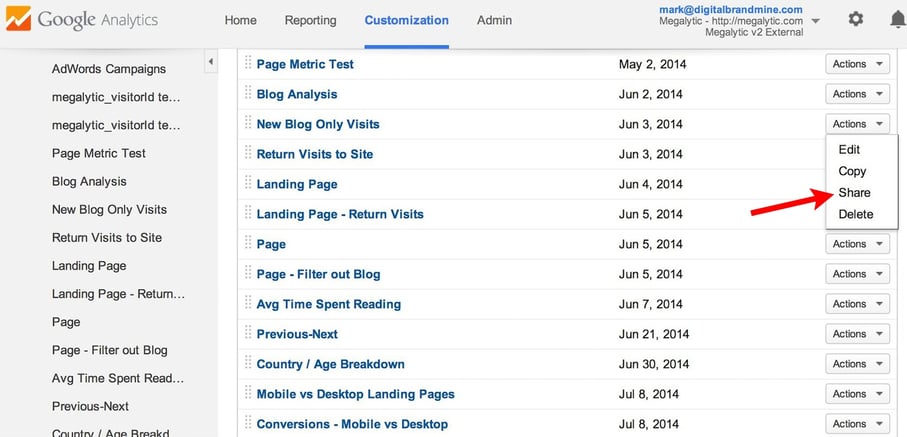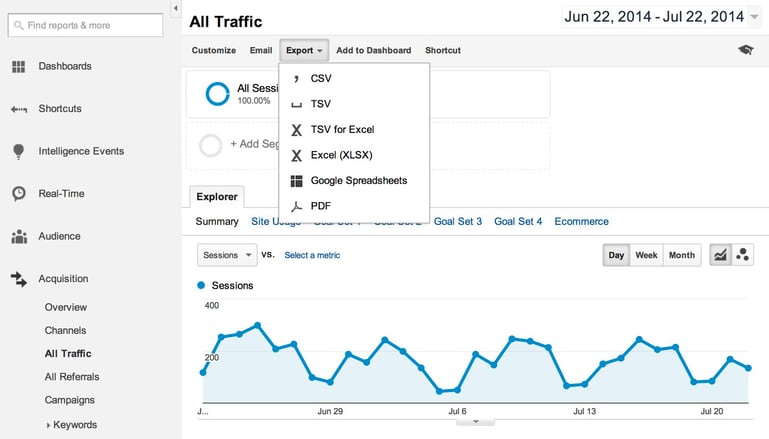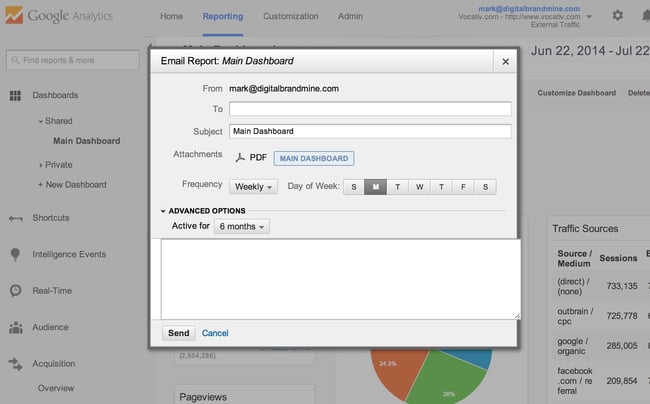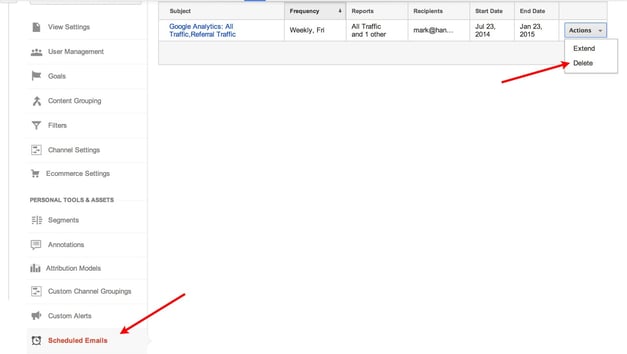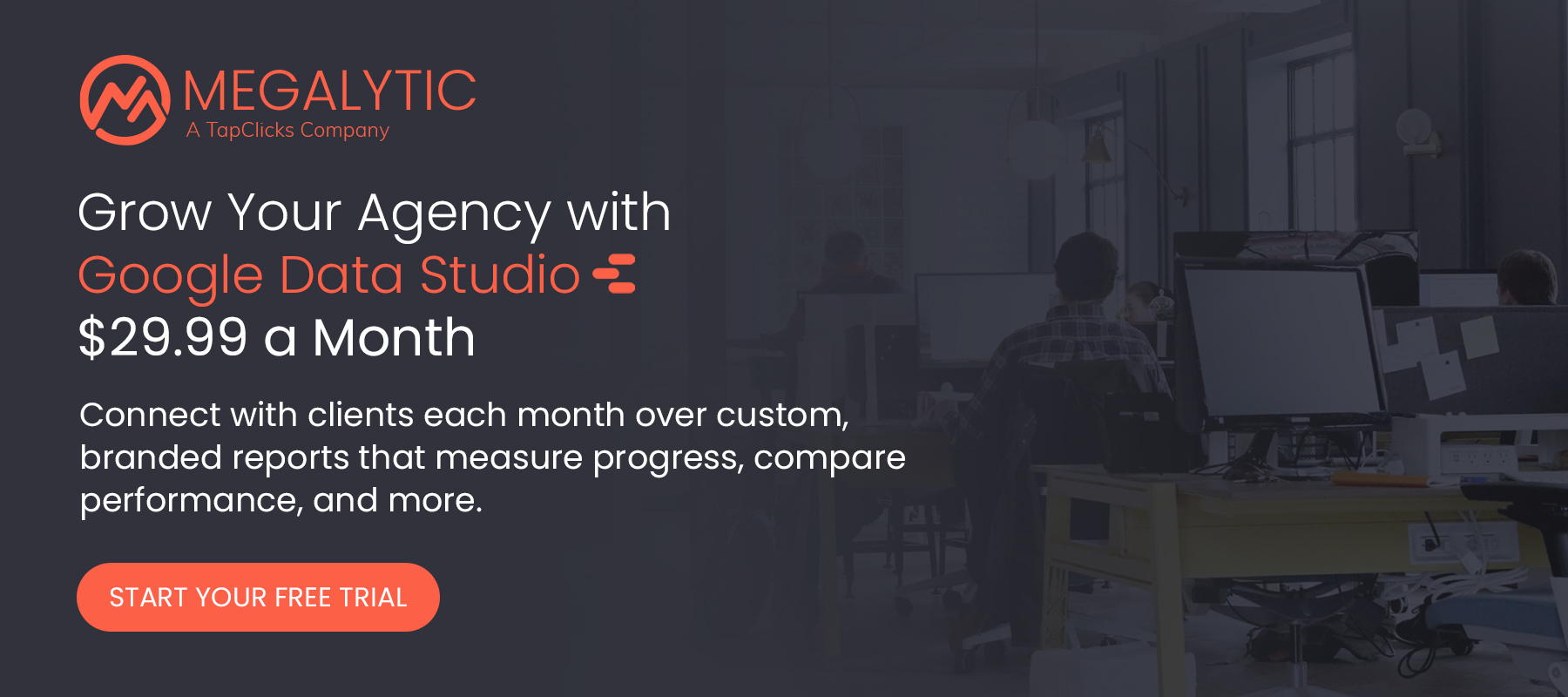May 20, 2024
Sharing Google Analytics Reports with Your Organization
By Megalytic Staff - July 24, 2014

Sharing Access to Your Google Analytics Account
Some colleagues in your organization may want to access Google Analytics directly. Having the ability may make them feel empowered and more likely to use the data. You can share your reports with them by granting access to their Google Account. If they don’t have one, they can create one here .
From the Admin section of your Google Analytics account, you can share access at three levels: Account, Property, and View. If you want to share access to all your data, use the Account level. For sharing data from one website, use the Property level, and from one View on a website, use the View level.
Click on User Management, and enter your colleague’s email address in the field labeled “Add permissions for.” There are four permissions levels . For sharing access to data, the lowest level – Read & Analyze – is sufficient.
Once you have added your colleague to your account, she will be able to access standard reports, but not your custom reports. That’s because custom reports are personal assets and are not shared along with the Account, Property, or View.
Sharing Custom Reports
To share one of your custom reports, open the Customization section of your account, click on the Actions button for the report and select Share.
A modal window will open where you can select “Share template link.” Click the “Share” button, and you will get a URL to share with your colleague. She can paste that URL into a browser and a page will open with instructions showing her how to add the custom report to the View that you shared with her.
Exporting Data in PDF, Excel and other Formats
Rather than log into Google Analytics, navigate the user interface, and find the data they need, many of your business colleagues may prefer to receive Google Analytics reports you have created for them, highlighting the data they need to support decision making.
To export the data from a report, click on the “Export” menu near the top of the report. You can select from a variety of formats including CSV, Excel, and PDF.
Select CSV, Excel, or Google Spreadsheets if you want to share the raw data. Select PDF if you want to share a document that includes charts and looks similar to what you see on your screen. Google Analytics Dashboards can also be exported in PDF format and shared with colleagues.
Automated Emails from Google Analytics
If you want to send the same Google Analytics report to your colleague every day, week, or month, select the “Email” menu item at the top of the report. You will be presented with a set of options enabling you to select how frequently you would like the report or dashboard to be emailed. Once you set this up, Google Analytics will automatically send your colleague the report at the designated interval for as long as you desire.
Your colleague will receive an email with a PDF copy of what appears on your screen. Since she will receive the data without any commentary, she will need to know how to interpret the charts and data. If your decision-makers are not experts at interpreting Google Analytics reports, you may want to use automated emails to distribute data as a warm-up prior to a “lunch and learn” that you schedule with them each month to review the analytics.
If your colleague leaves the company, or no longer needs the report, you can stop the automated emails from being sent out. To do that, navigate to the Admin page and select the “Scheduled Emails” item under the View menu. Here, you will see a table listing your automated emails and you can extend or delete them.
Data Confidentiality Concerns
Another reason why you may want to export or email selected reports to colleagues is data confidentiality. For example, you may want the editorial staff to have access to data about how well content is performing, but prevent them from accessing E-commerce data or analytics related to paid advertising.
In Google Analytics, access is managed at the View level. If a person has access to a View, they have access to all the data in that view. There is no way to give them access to only certain metrics.
In this scenario, you can export or email specific reports that contain only the metrics you want to share.
Tools for Enhanced Reporting
Depending on your organization’s needs, you may find that the export and email features in Google Analytics are insufficient. For example, you may want your reports to include multiple charts and tables interspersed with commentary that explains the data. Or, you may want to include branding (e.g., your logo) and a cover page. In addition, you may want to include data from sources outside Google Analytics in your reports, or your colleagues may request to only see specific data most relevant to them.
Unfortunately, this ability is not offered via Google Analytics. Fortunately, there are a variety of tools to help you in this situation.
One such tool, of course, is Megalytic.
Digital agencies, marketers and business owners use Megalytic for faster, more insightful and cleaner looking analytics reports. In addition, Megalytic enables you to include data from Google Ads and Google Search Console in your reports.
One of Megalytic’s strongest agency reporting features is the ability to add comments to explain your analytics. Clients (and internal decision-makers) often benefit from reading text commentary that explains the data shown in charts and graphs. With Megalytic, you can intersperse explanation with data and include a summary cover page.
When looking for a reporting solution, there are some other tools you should consider as well. RavenTools is popular, and offers access to 20+ SEO, social, PPC, and content marketing tools along with reporting. If you are looking more into additional dashboards than reporting, check out DashThis . Google also has its own reporting studio called Data Studio.
Conclusion
For Analytics to have an impact on decision making, it needs to be shared and explained. Google Analytics provides a variety of mechanisms for sharing data with your organization. For colleagues who are really into data, consider sharing access to your Google Analytics account. For others, you can take advantage of the export capabilities and send them just the data they need. And if you need it, Megalytic can help you share multi-page reports, with the ability to add commentary that helps internal stakeholders understand the data they are receiving.

